
© Paul Kolnik. (Click image for larger version)
New York City Ballet
Tschaikovsky & Balanchine: Serenade, Mozartiana, Tschaikovsky Piano Concerto No. 2
★★★✰✰
New York, David H. Koch Theater
23 January 2019
www.nycballet.com
davidhkochtheater.com
One of the earliest things I appreciated about Balanchine is that he made me feel okay about liking Tschaikovsky (as NYCB likes to spell it). So, even though this evening’s program, while all masterpieces, struck me as a little random – with the first two ballets both usually curtain-raisers and the third more often a middle ballet – it was still welcome.
It may have a whiff of clickbait to say “The curtain rose on Serenade and I couldn’t believe my eyes!” but apparently I’ve been away from this favorite ballet for far too long, as this was my first look at the ballet clad in versions of the iconic Karinska costumes as remade in 2017, with two markedly yellow patches running down the front of each skirt. As Alastair Macauley explained to me on Twitter, the current rendition has the yellow substantially toned down, but it’s still far from the former beige, so subtle it read, to me, anyway, as a swatch of slightly more translucent fabric. Distracting palettes aside, this was a moving Serenade, led by Sara Mearns’ portrayal of the Waltz Girl, the perhaps doomed, perhaps jilted, perhaps reborn “heroine” of the ballet’s dreamlike narrative. While some dancers might portray the Waltz Girl as tragedienne handed a terminal diagnosis before her first leap onstage, or an ascetic, naif Everywoman tossed between ever-more-dramatic episodes, Mearns faced the Waltz Girl’s journey with a gravitas that tinged the joy of her titular waltz with Jared Angle with, not so much a foreboding of her eventual abandonment by Aaron Sanz (replacing Preston Chamblee) but an acceptance of each moment’s fleeting impermanence. Even in her “death,” Mearns’ sculptural weightiness spoke most powerfully of this Waltz Girl’s strength and even heroism. Tiler Peck was as brilliant a Russian Girl as you could expect (or want), and Megan Lecrone a spectral Dark Angel, her arms appearing as if wings sprouting from Sanz’ back for the tableaux in which Balanchine famously has those two, along with Mearns, quote Canova’s statue of Cupid and Psyche.
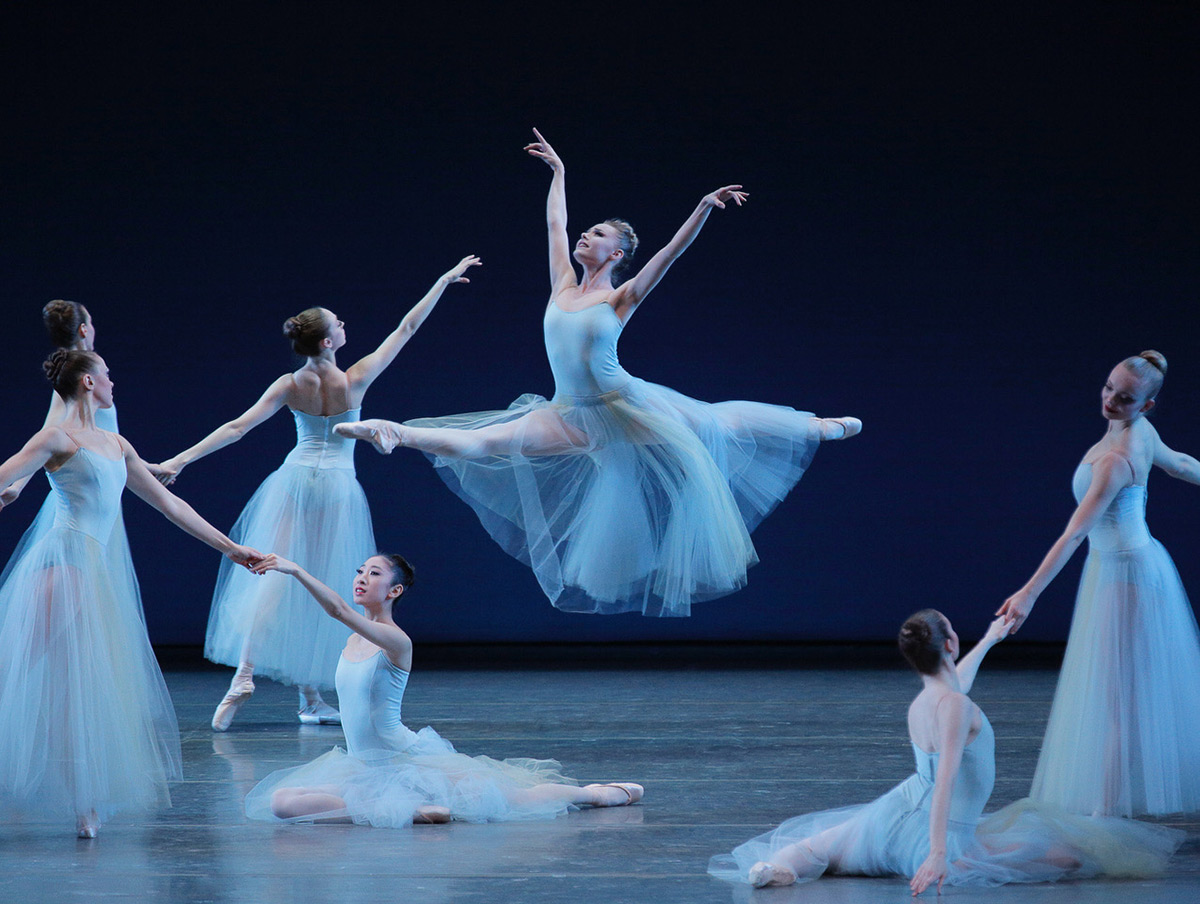
© Paul Kolnik. (Click image for larger version)
Would that Mozartiana had been quite so revelatory as Serenade. I’ve long admired Mozartiana as an almost magical ballet which can inspire a ballerina to find artistic depths within herself. So it’s been with Maria Kowroski. As she often has, in dramatic roles, a certain blank facial affect, I looked where I usually seek her language: in the winglike breadth of her shoulders and arms, the articulation of her long feet, and her leg’s taut, bow-like curvature in arabesque. This night, however, Kowroski’s opening prayer seemed more that of a dutiful child before bedtime than an artist addressing her maker, heralding a careful but uninspiring performance. Although Tyler Angle’s leaps and batterie delicately trod the no-man’s-land between understated and underachieving, he partnered Kowroski with his familiar charm and engagement. Kowroski did blossom a bit in their tricky adagios, but I found myself wishing I, too, could see the exciting ballerina who brought such a sparkle to Angle’s eye. I was happy to see the elegance of Daniel Ulbricht’s Gigue more equal to the verve of the dance’s many leaps, and looking more the dance of a courtier than jester.
The program closed with the debut of new costumes by Marc Happel in Tschaikovsky Piano Concerto No. 2, which are not quite so distractingly encrusted with coruscating Swarovski crystals as his unfortunate replacements for Karinska’s iconic work in Symphony in C in 2012. Happel has dressed the company in varying shades of blue, with more-sturdily constructed bodices for the women and formally cut vests for the men, all, of course, glinting with Swarovski hoarfrost, making for a stodgy sort of glamor, as if the company had made a half-hearted feint back towards the glorious, old-school Karinska tutus which once graced this ballet formerly known as Imperial, but got lost in an ice storm along the way. The women still wear chiffon skirts, a hallmark of the ballet’s look since it was incarnated as PC No. 2, although they don’t billow quite so airily as previous designs by Karinska, Ben Benson and Gary Lisz. As with Happel’s Symphony in C costumes, these have a glint of highbrow product placement, but one will get used to them, because one must. (And one fears for Jewels.) The men’s fussy double-breasted vests say “riverboat gambler” as much as Imperial anything. Puzzlingly, the men’s tights and shoes match almost exactly the ballet’s dark-blue cyclorama, and, not unpredictably, tend to disappear against it. Joseph Gordon debuted in the ballet’s lead; I assume his batterie was fine, but who could tell? Mark Stanley’s dim lighting did not help.

© Paul Kolnik. (Click image for larger version)
A decade or so ago, I was thrilled by Ashley Bouder’s debut in PC No. 2. I was thrilled by just about everything she did. It wasn’t just her prodigious technique, particularly her leap that just went up, then up some more (like Eddie Villella’s), and bravura but also her musicality and what I can only call dance intelligence. She wasn’t just fleet, but fleet enough to play with her phrasing in even the quickest of allegros: fearless rubato on the edge of a volcano. And, for me, she wasn’t only playing with the beat, but shaping it artistically, and never more evidently than in PC No. 2 – not just the allegros, but everywhere. In the opening solo, which is about control more than speed, she wasn’t so much executing (very difficult) steps, but presenting a single, legato phrase, from beginning to end. I was always aware of her mind deftly fitting the bits and pieces together, creating an edifice that became more interesting year after year. I know I’m speaking in mushy metaphor, and describing how her dancing made me feel more than what it looked like, but, sometimes that has to do. She sometimes had a broad, almost pugnacious approach to her roles, and an occasional self-satisfied look, but this was part of her charm, and put me in mind of Dizzy Dean’s “it ain’t bragging if you can do it.”
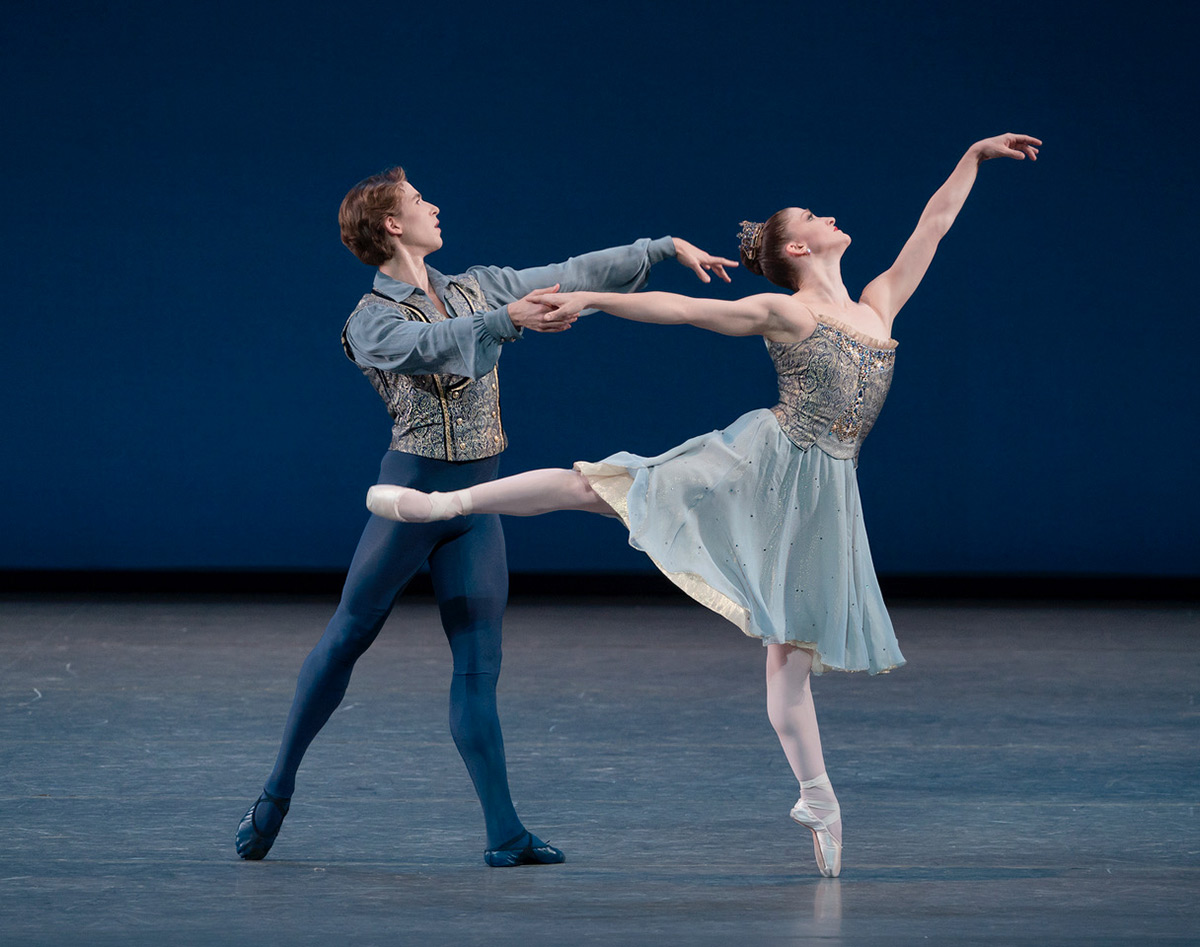
© Paul Kolnik. (Click image for larger version)
I use the past tense because in recent years Bouder’s dancing hasn’t been what it once was, and I’ve held off reviewing her performances in hopes of finding her former magic the next time. I hoped this revival of PC No. 2 would be that next time, but it wasn’t. Her former self-satisfaction has ossified into near-permanent smugness, her musicality has largely devolved into metronomy, and, while her movement was always strongly controlled, her phrasing has become tight and even brittle, showing little of her former daring and artistry. There were echoes of the Bouder I remembered, with juicy rubato in some enveloppés during an adagio with Gordon, or her ballet-russing dramatics (uneasy lies the head that wears the large bejeweled tiara) but, despite these, and her still-formidable technique, she was, it kills me to say, dull. You shouldn’t ever watch this ballet and observe that the demi-soloist has more sparkle and verve than the ballerina, but it happened to me every time Lauren King shared the stage with Bouder. I don’t know whether I was seeing the result of an injury, or unfortunate artistic decisions, but I missed the dancer I once adored.
I hate having written the above, and I would like nothing better than for Bouder to prove me a liar and make me eat my words. Until then I’ll have to be content with memories, old videos, and a lot of bourbon.












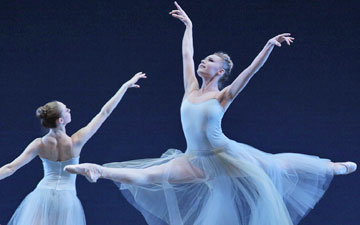
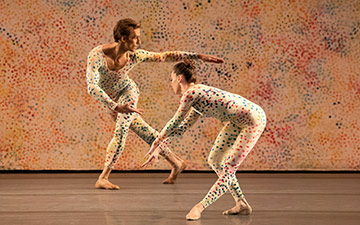


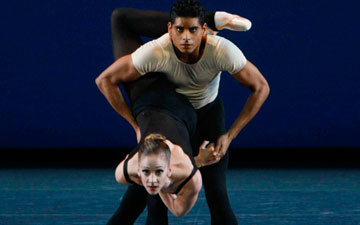
It’s wonderful to see Eric Taub in print again. I’ve missed his prose and his ability to define what wonder is in a performance and disappointment in a dancer’s attitude.
Write more, Eric, write more! And you have the Saratoga summer for us to enjoy vicariously!
Thanks, Renee. And Jann. I’m glad to be back, and even gladder to see comments like each of yours!
Hurrah! Eric Taub is back on Dance Tabs in fine form, clarifying his reactions and reservations with the benefit of long experience.